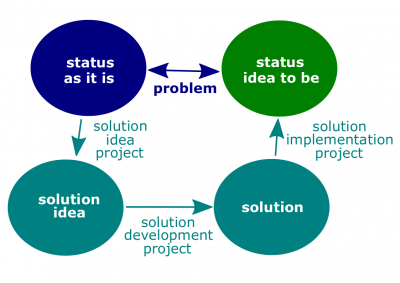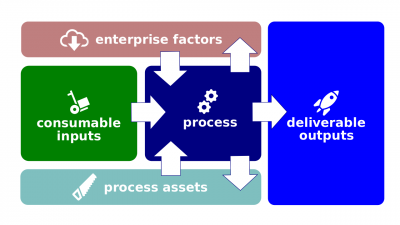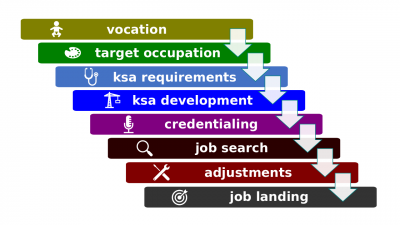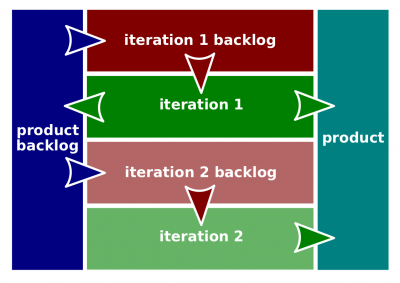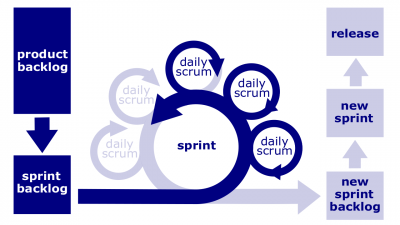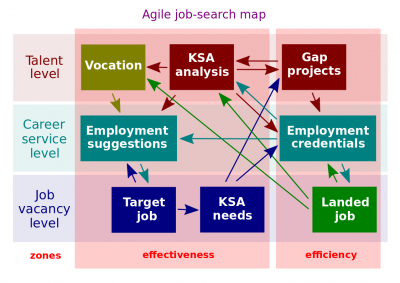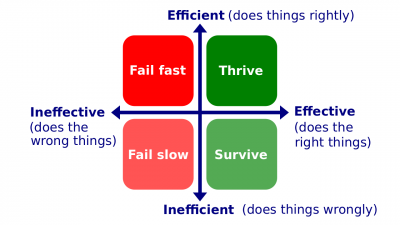Difference between revisions of "Career Endeavors"
(→Lisa in Agile) |
|||
| (40 intermediate revisions by 2 users not shown) | |||
| Line 1: | Line 1: | ||
| − | [[File: | + | [[File:Cnm-digital.png|400px|thumb|right|[[CNMCyber suite]]s]]The [[Career Endeavors]] (hereinafter, the ''Lesson'') is the [[lesson]] of [[CNMCyber]] that introduces its participants to [[career project]]s and related topics. The ''Lesson'' belongs to the '''[[Introduction to Careers]]''' session of [[EmployableU Concepts]]. |
| − | + | The ''Lesson'' is made up of five [[lectio]]s. At [[CNMCyber]], the word, [[lectio]], is used for a lesson part. | |
| − | == | + | ==Summaries== |
| − | The video of the presentation is published | + | ===Predecessor=== |
| + | :The predecessor lesson is [[Employability Essentials]]. | ||
| + | |||
| + | ===Outline=== | ||
| + | :{|class="wikitable" width=100% style="text-align:center;" | ||
| + | |+[[Career Endeavors]] | ||
| + | |width=25%|[[Lectio]]s | ||
| + | !#!!Referred topics | ||
| + | |- | ||
| + | ![[What Career Endeavor Is]] | ||
| + | |1||[[Career project]], [[career endeavor]], [[career operations]] | ||
| + | |- | ||
| + | ![[Career Waterfalls]] | ||
| + | |2||[[Career waterfall]] | ||
| + | |- | ||
| + | ![[Agile Career Projects]] | ||
| + | |3||[[Agile career project]], [[Agile methodology]] | ||
| + | |- | ||
| + | ![[Job Search Map]] | ||
| + | |4||[[Agile job-search map]] | ||
| + | |- | ||
| + | ![[Job Search Pivots]] | ||
| + | |5||[[Startup pivot]], [[effectiveness]], [[efficiency]] | ||
| + | |} | ||
| + | |||
| + | ===Successor=== | ||
| + | :The successor lesson is [[Employment Credentials]]. | ||
| + | |||
| + | ==2019 Career Projects presentation== | ||
| + | The video of the presentation is published on https://youtu.be/CVwp6WAAiYo (7:33). Here is its full text. | ||
===Overview=== | ===Overview=== | ||
| Line 26: | Line 55: | ||
:[[File:Process.png|400px|thumb|[[Process]]]]To dig into [[project]]s deeper, let's take a quick look at the model of a [[process]]. | :[[File:Process.png|400px|thumb|[[Process]]]]To dig into [[project]]s deeper, let's take a quick look at the model of a [[process]]. | ||
| − | :A [[process]] is a sequence of activities undertaken in order to achieve particular results. [[Systems engineer]]s may also define a [[process]] as converting [[input]]s into [[output]]s using some tools and techniques while being influenced by enterprise factors. | + | :A [[process]] is a sequence of activities undertaken in order to achieve particular results. [[Systems engineer]]s may also define a [[process]] as converting [[input]]s into [[output]]s using some assets such as data, tools, and techniques while being influenced by enterprise factors. |
:Does it sound complicated? If you need to create an idea of a solution, your time would be an input, all collected available information, as well as your decision-making skills would be your assets, legal and ethical considerations can be your factors, and an idea would be your output. | :Does it sound complicated? If you need to create an idea of a solution, your time would be an input, all collected available information, as well as your decision-making skills would be your assets, legal and ethical considerations can be your factors, and an idea would be your output. | ||
| Line 60: | Line 89: | ||
===Summary=== | ===Summary=== | ||
| − | :This concludes the ''Career Projects'' presentation. We have defined [[project]]s and taken a look at the [[career waterfall]] and [[Agile methodology]]. If you haven't done yet so, you are now welcome to move to | + | :This concludes the ''Career Projects'' presentation. We have defined [[project]]s and taken a look at the [[career waterfall]] and [[Agile methodology]]. If you haven't done yet so, you are now welcome to move to the ''Job Search Map''. |
| + | |||
| + | ==2019 Job Search Map presentation== | ||
| + | The video of the presentation is published on https://youtu.be/U1UxuoMqSg4 (4:23). Here is its full text. | ||
| + | |||
| + | ===Overview=== | ||
| + | :Welcome to ''Job Search Map''. In this brief presentation, we are going to review the [[Agile job-search map]] and take a look at how employment candidates can use that in order to land their promising jobs. Let's go. | ||
| + | |||
| + | ===Agile career project=== | ||
| + | :[[File:Career-administration.png|400px|thumb|[[Agile job-search map]]]]The goal of the [[Agile job-search map]] is to navigate [[employment candidate]]s in their job search. We can see the talent level is on the top, the career service one in the middle, and the job vacancy level is on the bottom. | ||
| − | + | :This map has two hubs in its career service level. Employment suggestions is the place which is needed to match three things -- [[vocation]], existing [[knowledge, skills, and abilities]], and available positions on the [[job market]]. The existing [[knowledge, skills, and abilities]] are assessed through their analysis, which is marked as KSA analysis. | |
| − | : | ||
| − | == | + | :The target position comes with its KSA requirements that shall be compared against existing [[knowledge, skills, and abilities]] in order to identify gaps, and, consequently, formulate gap projects. |
| − | + | ||
| − | + | :For instance, [[Educaship Alliance LLC]] hires [[bookkeeper]]s who needs to know [[debit]]s and [[credit]]s, as well to be able to do [[income statement]]s and [[balance sheet]]s. Let's assume that someone has everything, but [[income statement]]s. To complete the gap project, this someone can review [[income statement]]s in order to add it to his or her skill set. | |
| + | |||
| + | :[[Employment credential]]s is another hub. Someone or something needs to credential you in order to get a job. Usually, minimum requirements need to be met in order to get a [[job interview]]. A few credentials can be earned during the interview as well. | ||
| + | |||
| + | :The most important feature of the [[Agile job-search map]] is that a big project is chunked in many smaller ones and results in one can define objectives for another. For instance, the landed job may redefine one's [[vocation]], [[employment credential]]s feed employment suggestions, and so on. | ||
| + | |||
| + | ===Effectiveness vs efficiency=== | ||
| + | :The [[Agile job-search map|Agile map]] prompts that the endeavors on the left lay in the effectiveness zone, while the one on the right do in the efficiency zone. With regard to [[career]]s, [[effectiveness]] refers to targeting right jobs and [[efficiency]] refers to landing jobs faster. The left side of this illustration is about choosing the direction to go and the right side is about actually going. | ||
| + | |||
| + | :[[File:Efficiency-effectiveness.png|400px|thumb|[[Efficiency]] vs [[effectiveness]]]]Now, let's go to another illustration. This matrix displays what may happen if you go fast in a wrong direction. You are just investing your time and effort into your career "death." | ||
| + | |||
| + | :At the same time, most of professional [[workforce service provider]]s concentrate on efficiency -- [[résumé]]s, [[interviewing skill]]s, and so on. Of course, it is helpful to those job seekers who know their direction. There is a chance that the others play a [[Wikipedia:Russian roulette|Russian roulette]], which is a lethal game of chance -- the options are to stay alive or die. | ||
| + | |||
| + | ===Summary=== | ||
| + | :This concludes the ''Job Search Map'' presentation. We have reviewed the [[Agile job-search map]] and taken a look at those endeavors that [[employment candidate]]s may undertake in order to land their jobs. The special stress was made on the difference between [[efficiency]] and [[effectiveness]] in [[career administration]]. If you haven't done yet so, you are now welcome to move to [[Employment Credentials]]. | ||
[[Category: Orientation Curriculum]][[Category:Presentations]] | [[Category: Orientation Curriculum]][[Category:Presentations]] | ||
Latest revision as of 19:29, 29 October 2023
The Career Endeavors (hereinafter, the Lesson) is the lesson of CNMCyber that introduces its participants to career projects and related topics. The Lesson belongs to the Introduction to Careers session of EmployableU Concepts.
The Lesson is made up of five lectios. At CNMCyber, the word, lectio, is used for a lesson part.
Summaries
Predecessor
- The predecessor lesson is Employability Essentials.
Outline
Successor
- The successor lesson is Employment Credentials.
2019 Career Projects presentation
The video of the presentation is published on https://youtu.be/CVwp6WAAiYo (7:33). Here is its full text.
Overview
- Welcome to Career Projects. In this brief presentation, we are going to define projects and take a look at two major methods that employment candidates can use in order to land their promising jobs.
What a project is
- Let's start with a question. What may employment candidates borrow from business administration practices in order to advance their careers? Projects are an obvious choice.
- Enterprises tend to run two types of operations -- ones are ongoing, established, repetitive, and the others aim to create something new.
- Is your employment established or desired? If desired, we can state that you are in a project of landing your job.
- To understand projects better, let's take a look at the available illustration.
- There are two statuses -- one on the upper left is as it is and another on the upper right is to be. The difference between these two is called a problem to be solved. There should be some solution, but usually that solution needs to be yet identified.
- Many projects are nesting. Solving a problem is a project, but creating a solution or even development of an idea for the solution are by the definition projects too. To indicate that they are parts of a bigger projects, they can be called project phases. And all of them include one or more processes, which can be considered as the smallest of projects.
What a process is
- A process is a sequence of activities undertaken in order to achieve particular results. Systems engineers may also define a process as converting inputs into outputs using some assets such as data, tools, and techniques while being influenced by enterprise factors.
- Does it sound complicated? If you need to create an idea of a solution, your time would be an input, all collected available information, as well as your decision-making skills would be your assets, legal and ethical considerations can be your factors, and an idea would be your output.
Project administration
- Administering projects particularly includes sequencing processes, and project phases that are required in order to accomplish a project. There are several approaches and, in this presentation, we will consider two major ones.
Job search as a waterfall
- A traditional model is called the career waterfall. Many career counselors may recommend this route.
- Waterfall refers to a sequential process where progress is seen as flowing steadily downwards through the phases.
- These phases may vary, but, when they come to careers, they often consist of, a, discovering one's vocation, bee, suggesting one's target occupation, see, identifying work-related competence needed for a particular position, dee, development of one's KSAs, ee, development one's employment credentials, eff, job search, and, eventually, landing one's job in the target occupation.
Lisa in Waterfall
- Let's add some real life example; just the name is changed to preserve the privacy. Meet Lisa, who used to believe that management was her vocation. She also felt sympathy to accounting. Her parents believed in that too. She attended a college for 4 years to earn an academic credential in operations management with concentration in managerial accounting, but no one wanted to hire her because of her lack of work experience. She started working as a sales representative and eventually stays in that occupation the most of her professional life. She doesn't regret about her 4 years in a college, and says that it was fun, but she has never managed any operations using managerial accounting in her career.
- That example is not everyone's case, and some waterfall projects can be successful, but there is no way that everything in that many-years project would go as planned and a great chunk of time -- and often money -- wouldn't be wasted.
Agile job search
- Agile is another methodology of administering projects. An Agile project is usually completed in several iterations. In different models these development cycles can also be called sprints and scrums.
- The results of each iteration shall be used to setup objectives for other iterations. So, instead of one huge and costly project without clear understanding of its outcome, the Agile methodology offers many smaller trials and, sometimes, fails in order to clarify objectives while on the way.
Lisa in Agile
- Let's imagine that Lisa from the example above used Agile. She had some vocation for management and accounting. Not to start from scratch, she also had some knowledge, skills, and abilities. She probably knew at least 50% of basic bookkeeping from her first semester in her college.
- In the tax season, she could have started looking for a job of an entry-level bookkeeper. If it is not the tax season, she could volunteer as a manager and or bookkeeper, so she would test whether those fit her vocation. She will put her hands on something she dreamed about and have a feeling whether she wants to continue or do something that in the Agile methodology is called "pivot."
- At any rate, in 4 years, Lisa would have a 4-year degree, 3 years of experience and an actual job.
- The most important feature of the Agile is that a big project is chunked in many smaller ones and results in one can define objectives for another.
Summary
- This concludes the Career Projects presentation. We have defined projects and taken a look at the career waterfall and Agile methodology. If you haven't done yet so, you are now welcome to move to the Job Search Map.
2019 Job Search Map presentation
The video of the presentation is published on https://youtu.be/U1UxuoMqSg4 (4:23). Here is its full text.
Overview
- Welcome to Job Search Map. In this brief presentation, we are going to review the Agile job-search map and take a look at how employment candidates can use that in order to land their promising jobs. Let's go.
Agile career project
- The goal of the Agile job-search map is to navigate employment candidates in their job search. We can see the talent level is on the top, the career service one in the middle, and the job vacancy level is on the bottom.
- This map has two hubs in its career service level. Employment suggestions is the place which is needed to match three things -- vocation, existing knowledge, skills, and abilities, and available positions on the job market. The existing knowledge, skills, and abilities are assessed through their analysis, which is marked as KSA analysis.
- The target position comes with its KSA requirements that shall be compared against existing knowledge, skills, and abilities in order to identify gaps, and, consequently, formulate gap projects.
- For instance, Educaship Alliance LLC hires bookkeepers who needs to know debits and credits, as well to be able to do income statements and balance sheets. Let's assume that someone has everything, but income statements. To complete the gap project, this someone can review income statements in order to add it to his or her skill set.
- Employment credentials is another hub. Someone or something needs to credential you in order to get a job. Usually, minimum requirements need to be met in order to get a job interview. A few credentials can be earned during the interview as well.
- The most important feature of the Agile job-search map is that a big project is chunked in many smaller ones and results in one can define objectives for another. For instance, the landed job may redefine one's vocation, employment credentials feed employment suggestions, and so on.
Effectiveness vs efficiency
- The Agile map prompts that the endeavors on the left lay in the effectiveness zone, while the one on the right do in the efficiency zone. With regard to careers, effectiveness refers to targeting right jobs and efficiency refers to landing jobs faster. The left side of this illustration is about choosing the direction to go and the right side is about actually going.
- Now, let's go to another illustration. This matrix displays what may happen if you go fast in a wrong direction. You are just investing your time and effort into your career "death."
- At the same time, most of professional workforce service providers concentrate on efficiency -- résumés, interviewing skills, and so on. Of course, it is helpful to those job seekers who know their direction. There is a chance that the others play a Russian roulette, which is a lethal game of chance -- the options are to stay alive or die.
Summary
- This concludes the Job Search Map presentation. We have reviewed the Agile job-search map and taken a look at those endeavors that employment candidates may undertake in order to land their jobs. The special stress was made on the difference between efficiency and effectiveness in career administration. If you haven't done yet so, you are now welcome to move to Employment Credentials.

